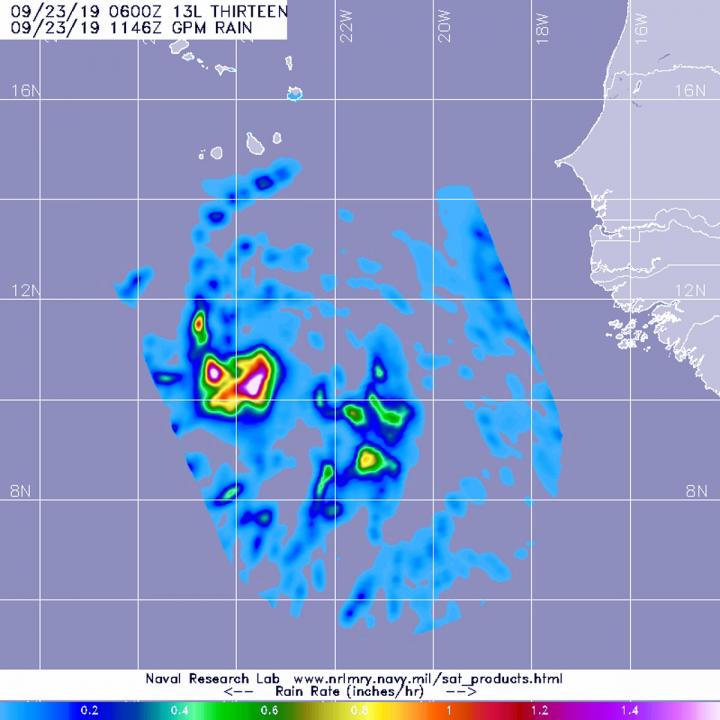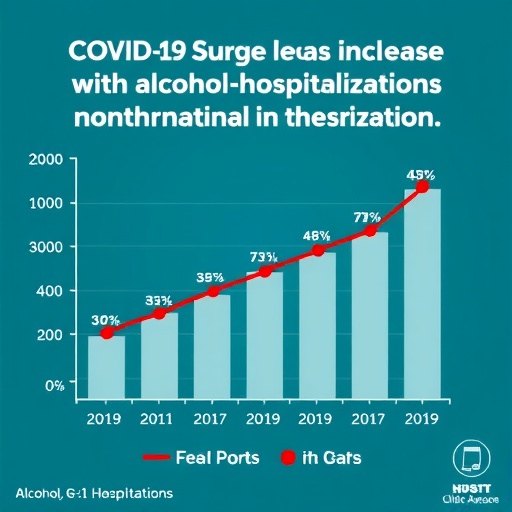
Credit: Credit: NASA/JAXA/NRL
NASA calculated the rainfall rates in the Atlantic Ocean’s newest tropical cyclone, Lorenzo.
NASA has the unique capability of peering under the clouds in storms and measuring the rate in which rain is falling. Global Precipitation Measurement mission or GPM core passed over the region from its orbit in space and measured rainfall rates in the storms.
The Global Precipitation Measurement mission or GPM core satellite passed over the eastern North Atlantic Ocean on Sept. 23 at 7:46 a.m. EDT (1146 UTC) and provided rainfall rates in Tropical Storm Lorenzo. The heaviest rainfall was occurring around the center, falling at a rate of over 36 mm (about 1.4 inch) per hour and at a rate of 25 mm (about 1 inch) per hour around a band of thunderstorms southeast of center. Both the Japan Aerospace Exploration Agency, JAXA and NASA manage GPM.
Forecasters at NOAA’s National Hurricane Center or NHC noted at 11 a.m. EDT (1500 UTC), the center of Tropical Storm Lorenzo was located near latitude 11.1 degrees north and longitude 24.1 degrees west. Interests in the Cabo Verde Islands should monitor the progress of this system.
Lorenzo is moving toward the west near 18 mph (30 kph). Maximum sustained winds have increased to near 40 mph (65 kph) with higher gusts. Additional strengthening is forecast, and Lorenzo is expected to become a hurricane by Wednesday. The estimated minimum central pressure is 1006 millibars. A motion toward the west-northwest is expected starting tonight, and this is forecast to continue through the middle of the week. On the forecast track, the center of the tropical storm should pass well to the south of the Cabo Verde Islands today and tonight.
Hurricanes are the most powerful weather event on Earth. NASA’s expertise in space and scientific exploration contributes to essential services provided to the American people by other federal agencies, such as hurricane weather forecasting.
For updated forecasts, visit: http://www.
###
Media Contact
Rob Gutro
[email protected]
Original Source
https:/




